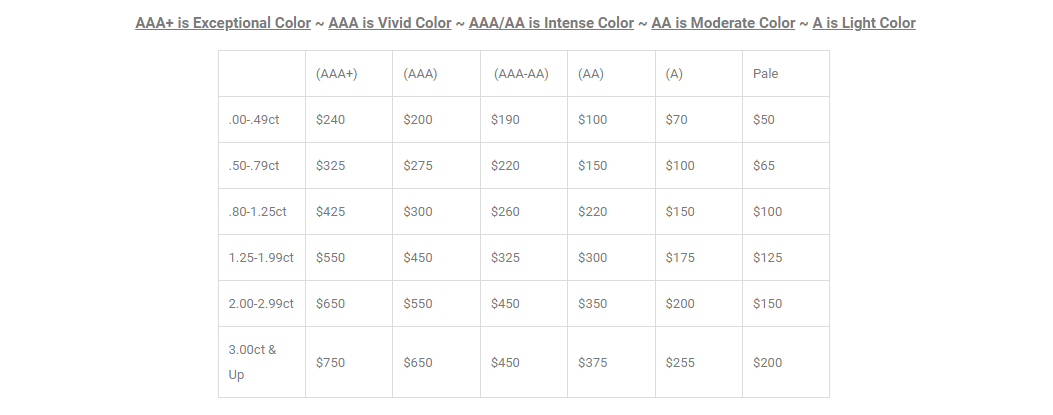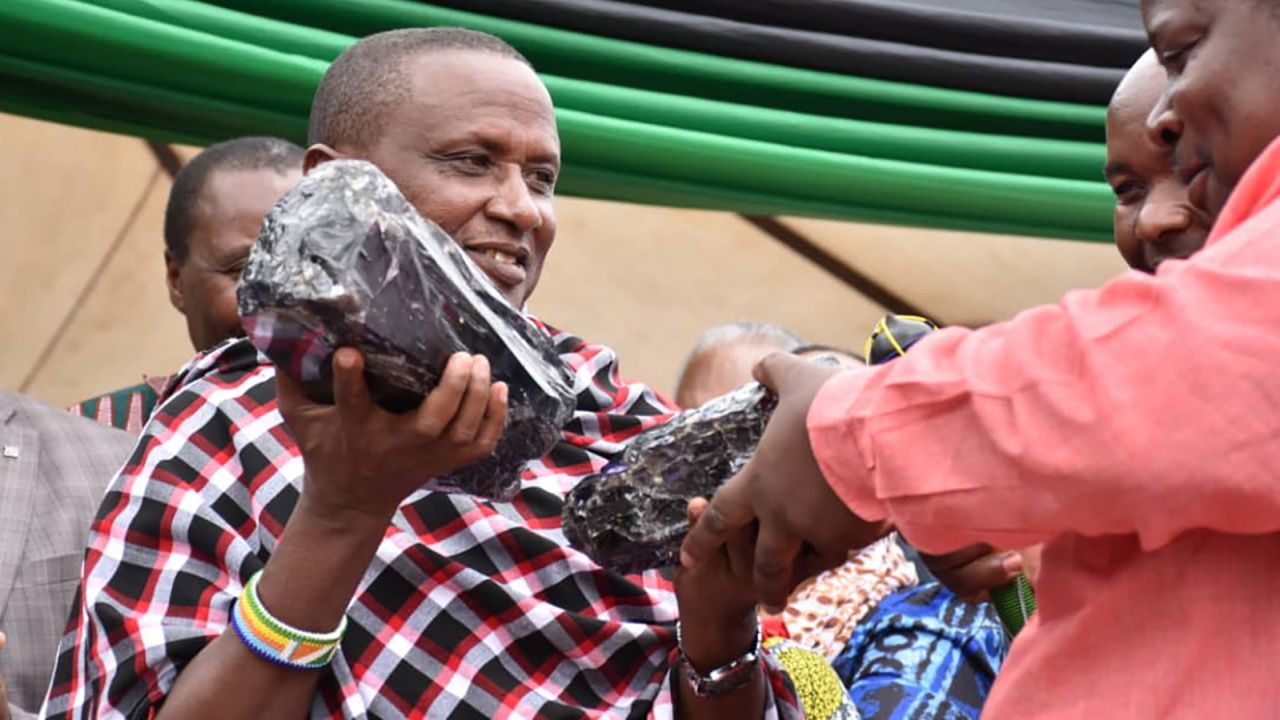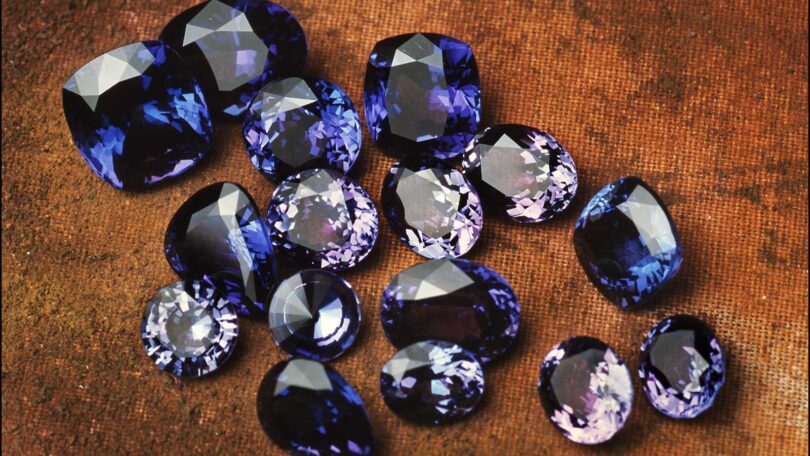Wildlife, beaches, and diverse cultures are some of the things that define East Africa but there is something more spectacular; Tanzanite in Tanzania. Tanzania is the only region on Earth where tanzanite or Blue Zoisite is found and her people have a special relationship with this alluring and intriguing gemstone. This uncommon blue-violet form of zoisite was discovered in the late 1960s close to Mount Kilimanjaro.
The northern part of Tanzania, Mererani Hills in particular is a tanzanite minefield characterized by an appealing hue; from deep blue to violet and frequently displays an alluring trichroism. It has since become an eye candy for gemstone lovers across the world. Besides, this precious gemstone attracts both jewellery lovers and collectors globally.
Table of Contents
How Much is Tanzanite in Tanzania?

Tanzania Tanzaite cost
You should pay between $200 and $675 Tanzanite in Tanzania. Prices vary depending on weight, and colour. For instance, Tanzanite with a clear green hue costs is the least expensive as many collectors deem it invaluable. A carat of brilliantly coloured AAA Tanzanite is worth between $200 and $350.
The cost per carat for 2ct sizes is $400–550. Up to 3 carats will cost between $500 and $675 per carat. Moreover, a stone’s clarity, colour quality in daylight and incandescent lighting, kind of cut, polish quality, demand, and supply of Tanzanite are additional elements that might affect value. Gemstones dealers cite that it is a great investment.
Which Country Has The Best Tanzanite?
Tanzanite in Tanzania wins as far as the debate on the country with the best gemstone is concerned. The gemstone formed more than 585 million years ago at the base of Mount Kilimanjaro, is now a key revenue earner due to its high collector value. Due to its unusual trichroic character and fire, the tanzanite is now one of the most exquisite collector shops across the world. Its vivid royal blue, rich violet, and opulent pink-red hue in different lighting conditions make it so unique.
Blue Zoisite stand for a soulful, timeless elegance, rarity, and originality over time. Its discovery, Tanzania’s heart, culture, and economics are intertwined. The two largest untreated Tanzanite stones discovered to date in the world were acquired by Saniniu Laizer, a small-scale miner from Simanjiro in the Manyara Region.
Both stones, which broke the previous record held by the Mawenzi stone discovered in 2005, were bought by the Tanzanian government on the president’s orders to display them in a local museum to celebrate the new record, honour Tanzania’s wealth, and highlight the significance of Tanzanite in Tanzania. The first stone weighs 9.2 kg and has a total estimated value of 4.5 billion Tanzanian shillings ($1.8 million). The second stone, which weighs 5.8 kg, was purchased for 3.3 billion Tanzania shillings (1.3 million).
Further, its limited scarcity adds to its collectable value. In the next decades, it’s anticipated that all tanzanite mines will be dug out. Now, this makes Tanzanite one of the rarest gems in the world—a thousand times rarer than diamonds. Not to mention the extreme temperatures, pressure, and mineral conditions necessary for its production.
Why is Tanzanite Only Found in Tanzania?
Tanzania is the only place where tanzanite sits and this is because of a rare geological occurrence that took place about 585 million years ago. The Mererani Hills in northern Tanzania underwent special geological processes that produced the ideal conditions for the mineral zoisite to change into tanzanite in Tanzania.
Additionally, the region’s geographic isolation and the presence of zoisite as a precursor mineral both led to tanzanite’s unique occurrence in Tanzania. And since Tanzania is still the only country that produces this alluring gemstone, it is highly valued and in high demand all over the world.

A man in Tanzania holding a tanzanite rock. Photo/CNN
What Color Of Tanzanite Is Most Expensive?
The vibrant and strong blue-violet tone of tanzanite is the most expensive colour and is also referred to as Royal Blue or Electric Blue. This particular colour grade of tanzanite is exceedingly rare and expensive due to the presence of a rich blue tint and undertones of violet.
Trace elements like vanadium and chromium that are present during the creation process of tanzanite affect its hue. As opposed to lighter or paler colours; the Royal Blue tanzanite exudes strong saturation which is also part of the reason why it is expensive.
How Can You Tell if Tanzanite is Real?
Take into account the following elements in evaluating if or not Tanzanite in Tanzania is fake or real.
- Verify the gemstone’s colour; tanzanite should have a striking blue-violet tint.
- Look at its trichroism, which exhibits various hues from various angles.
- Check the gemstone’s refractive index with a refractometer.
- Use a dichroscope to look for pleochroism.
- As tanzanite ranges from 6.5 to 7 on the Mohs scale, you can confirm its hardness.
- Obtain certification from trustworthy sources or gemological testing facilities.
- Check for UV fluorescence and clarity. Always seek the assistance of a licensed jeweller or gemologist when assessing this.
Conclusion
Due to its scarcity and captivating blue-violet colours, tanzanite is undoubtedly a genuine gem of Tanzania. Emerging from the prestigious Mererani Hills, it serves as a representation of the country’s natural marvel. This alluring gemstone continues to enthral jewellery lovers its connection to Tanzania remains a priceless treasure, loved for its distinct beauty and charm.









